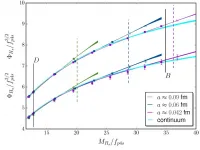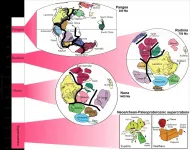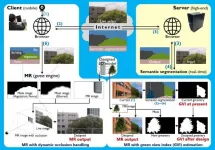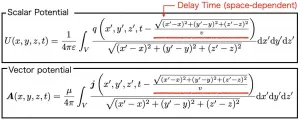(Press-News.org) Researchers at the Perelman School of Medicine at the University of Pennsylvania have produced a detailed molecular atlas of lung development, which is expected to be a fundamental reference in future studies of mammalian biology and of new treatments for diseases, such as COVID-19, that affect the lungs.
The researchers, who published their study in Science, generated a broad atlas of cell types in the developing and adult mouse lung by measuring the expression of genes in thousands of individual mouse lung cells across the lifespan, covering multiple cell types and stages of maturation, from early development in the womb to adulthood. Analyzing all this data, they predicted thousands of signaling interactions among different cell types in the developing lung, confirmed many of these with functional experiments, and identified several cells and molecular regulators that are critically important for normal lung development.
"This study provides foundational information to guide our understanding of how lung function develops, and how the early postnatal period of life is a time of rapid adjustment in the lungs to optimize gas exchange," said study senior investigator Edward Morrisey, PhD, the Robinette Foundation Professor of Medicine, a professor of Cell and Developmental Biology, and director of the Penn-CHOP Lung Biology Institute at Penn Medicine.
The trove of new data is likely to be valuable in the development of future treatments for early-life lung problems, including insufficient lung development in premature babies. It may also speed the search for better therapies for pneumonia and chronic obstructive pulmonary disease (COPD), two of the leading causes of death worldwide.
The study focused largely on the developmental steps leading to the maturation of alveoli. These delicate sac-like structures in the lungs contain thin, capillary-rich membranes that orchestrate the exchange of carbon dioxide in the bloodstream for oxygen in inhaled air. There are hundreds of millions of alveoli in an average human lung, and the total surface area of their gas-exchange membranes has been estimated as approximately the same as a tennis court's.
Many human diseases, from birth to old age, disrupt these vital structures. Yet the details of how cells emerge and signal to each other to bring about the formation of alveoli in early life have remained largely mysterious.
Morrisey's team used two relatively new techniques called single-cell RNA sequencing and single cell ATAC sequencing to record the expression and accessibility of genes in thousands of individual cells at seven different time-points during lung development in mice. They then analyzed the gene activity in each cell type, at each time point, to predict which cells were making important signaling molecules and which were expressing the receptors that receive those signals. In this way they made a map of predicted interactions among all these cells, from which they could identify key factors in alveolar development. Lastly, they confirmed the activity of two of these pathways, the Wnt and Sonic Hedgehog (Shh) pathway, using genetic mouse models to inactivate their function in specific cell types identified in the single cell experiments.
A novel finding of the study was the identification of a cell type known as the alveolar type 1 epithelial cell (AT1), which was already known to help form alveolar gas exchange interface, as a crucial originator and hub of molecular signals that guide alveolar development. The researchers also determined that another cell type known as the secondary crest myofibroblast (SCMF) plays a key role in guiding the maturation of alveolar structures. Morrisey's team moreover identified several transcription factor proteins--which regulate gene activity--as crucial for normal alveolar development. Some of these findings were also confirmed to occur in the human pediatric lung. The vast new dataset generated by the researchers should empower many future studies, including deeper studies of human lung development.
The molecular details of how alveoli develop will also inform future research aimed at treating disorders that affect these structures. Babies that are born very prematurely often suffer from respiratory distress because their alveoli are not yet fully developed. Pneumonias, which can be caused by bacteria or viruses--including SARS-CoV-2--and can affect anyone from childhood to old age, usually feature a storm of alveoli-damaging immune molecules and immune cells, and the destruction of the alveolar gas-exchange interface. Similarly, COPD, which can result from long-term cigarette smoking, involves chronic inflammation and degeneration of alveolar structures.
"We are hopeful that our study will provide a framework for a better understanding of the molecular pathways that could be harnessed to promote lung regeneration after acute or chronic injury," Morrisey said.
INFORMATION:
Bone turnover markers, and specifically bone resorption markers, are commonly used to monitor patients' response to pharmacological treatment and adherence.
In 2011, the Joint Committee on Bone Marker Standards of the International Osteoporosis Foundation (IOF) and the International Federation of Clinical Chemistry and Laboratory Medicine (IFCC) designated Procollagen type I N-propeptide (PINP) and the C-terminal telopeptide of type I collagen (ß-CTX) in blood as reference bone turnover markers for bone formation and bone resorption, respectively, in osteoporosis. ...
Peer deeper into the heart of the atom than any microscope allows and scientists hypothesize that you will find a rich world of particles popping in and out of the vacuum, decaying into other particles, and adding to the weirdness of the visible world. These subatomic particles are governed by the quantum nature of the Universe and find tangible, physical form in experimental results.
Some subatomic particles were first discovered over a century ago with relatively simple experiments. More recently, however, the endeavor to understand these particles has spawned the largest, most ambitious and complex experiments in the world, including ...
An international team of researchers has found that three commonly used antiviral and antimalarial drugs are effective in vitro at preventing replication of SARS-CoV-2, the virus that causes COVID-19. The work also underscores the necessity of testing compounds against multiple cell lines to rule out false negative results.
The team, which included researchers from North Carolina State University and Collaborations Pharmaceuticals, looked at three antiviral drugs that have proven effective against Ebola and the Marburg virus: tilorone, quinacrine and pyronaridine.
"We were looking for compounds that could block the entry of the virus into the cell," says Ana Puhl, senior scientist at Collaborations Pharmaceuticals and ...
Scientists investigating the genetics of chilli pepper species have discovered a whole host of new chilli hybrids that can be grown by crossing domesticated peppers with their wild cousins. This will allow plant breeders to create new varieties that have better disease resistance and could increase productivity.
Despite their huge world-wide culinary appeal, chillies are relatively difficult to cultivate, being prone to disease and sensitive to growing conditions.
There are 35 species of pepper in the Capsicum family, including five domesticated species. The most well-known ...
The process of fabricating materials is complicated, time-consuming and costly. Too much of one material, or too little, can create problems with the product, forcing the design process to begin again. Advancements in the design process are needed to reduce the cost and time it takes to produce materials with targeted properties.
Funded by the National Science Foundation (NSF), researchers at Texas A&M University are using advanced computational and machine-learning techniques to create a framework capable of optimizing the process of developing materials, cutting time and costs.
"Our general focus ...
Curtin University research has uncovered the first solid clues about the very beginning of the supercontinent cycle of Earth, finding it was kick-started two billion years ago.
Detailed in a paper published in Geology, a team of researchers from Curtin's Earth Dynamics Research Group found that plate tectonics operated differently before two billion years ago, and the 600 million years supercontinent cycle likely only started during the second half of Earth's life.
Lead researcher Dr Yebo Liu from Curtin's School of Earth and Planetary Sciences said that the shift in plate tectonics marked a regime change in the Earth System.
"This regime change impacted on the eventual emergence of complex life and even ...
The talented athletes are there. The cheering fans are there. But the media? It's nowhere to be found.
This is the reality of women's sports, which continue to be almost entirely excluded from television news and sports highlights shows, according to a USC/Purdue University study published on March 24th in Communication & Sport.
The survey of men's and women's sports news coverage has been conducted every five years since 1989. In the latest study, researchers found that 95% of total television coverage as well as the ESPN sports highlights show SportsCenter focused on men's sports in 2019. They saw a similar lopsidedness ...
A research group at the RIKEN Center for Computational Science (R-CCS) has found that glycans--sugar molecules--play an important role in the structural changes that take place when the virus which causes COVID-19 invades human cells. Their discovery, which was based on supercomputer-based simulations, could contribute to the molecular design of drugs for the prevention and treatment of COVID-19. The research was published in the Biophysical Journal.
When SARS-CoV-2--the coronavirus that causes COVID-19--invades a human cell, a spike protein on its surface binds to an enzyme called ACE2 on the surface of the cell. The ...
Osaka, Japan - Scientists from the Division of Sustainable Energy and Environmental Engineering at Osaka University employed deep learning artificial intelligence to improve mobile mixed reality generation. They found that occluding objects recognized by the algorithm could be dynamically removed using a video game engine. This work may lead to a revolution in green architecture and city revitalization.
Mixed reality (MR) is a type of visual augmentation in which real-time images of existing objects or landscapes can be digitally altered. As anyone who has played Pokémon Go! or similar games knows, looking at a smartphone ...
Osaka, Japan - Most of the devices used in our daily lives are operated and controlled by electricity. From the standpoint of safety and the tight supply and demand of electricity, circuit design that satisfies low electromagnetic noise and power saving is becoming increasingly important.
In an electric circuit, electric signals transmit inside the conductor, and electromagnetic fields radiate outside the conductor. Furthermore, the electromagnetic field propagates through the air and is converted into signals for itself and other circuits, which leads to electromagnetic noise. Now, a research team at Osaka University has formulated a numerical method ...




